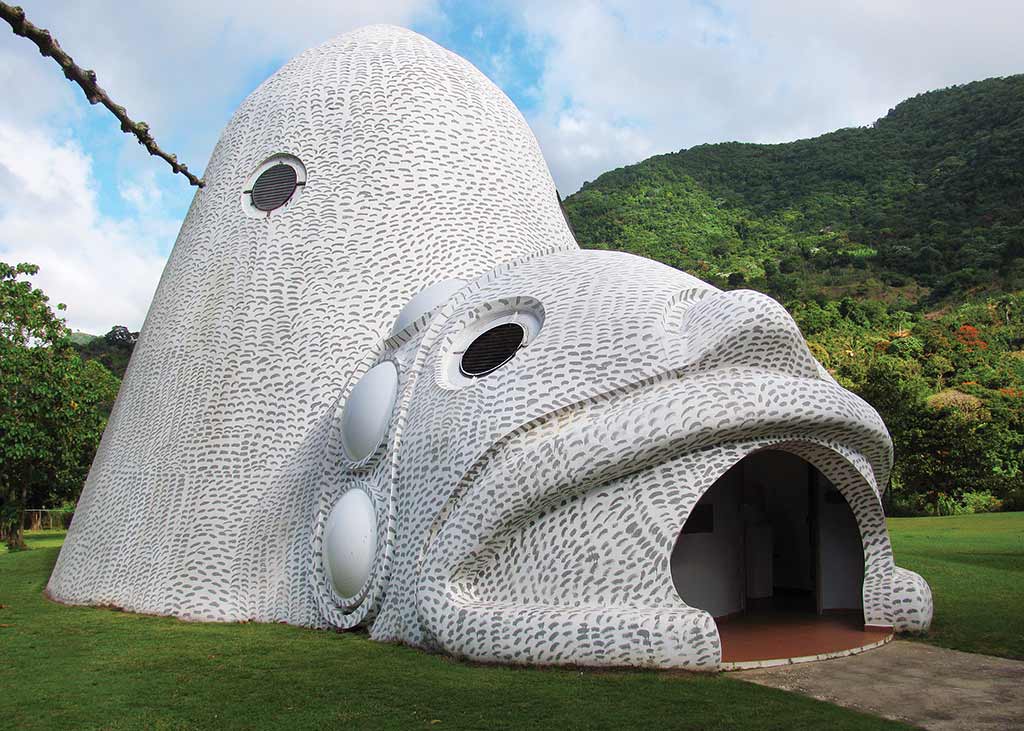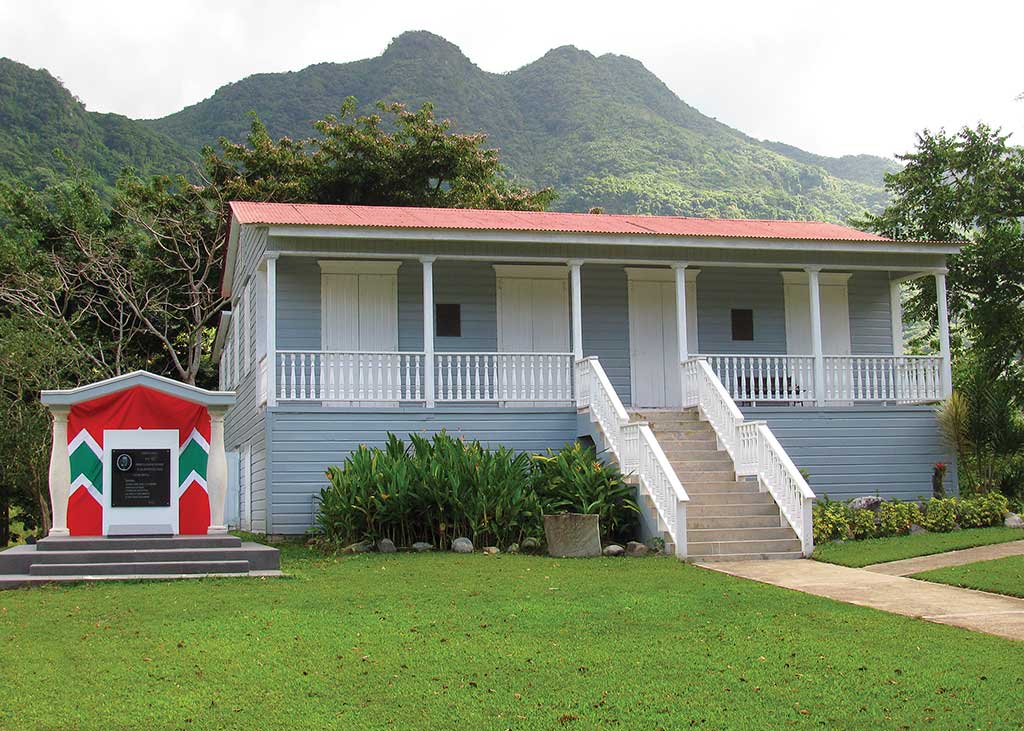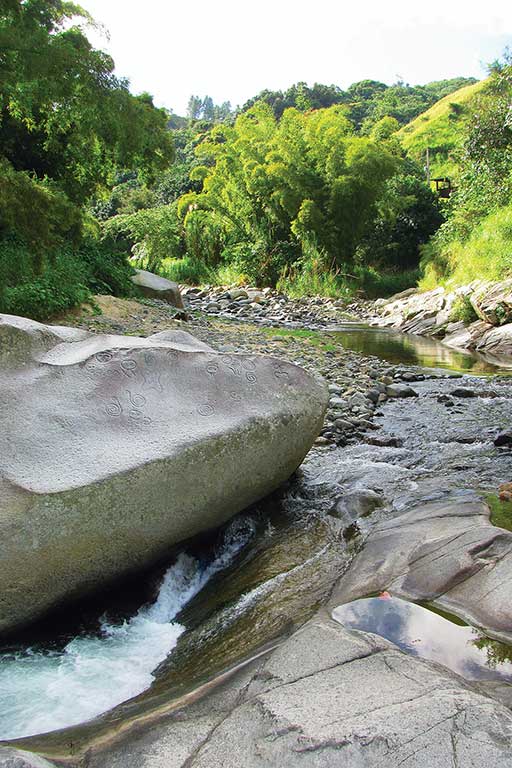If you visit only one place in Puerto Rico’s Cordillera Central, go to Jayuya. The central town is a bit grim, offering little of interest to visitors. The reason to go is to experience the gorgeous mountain scenery and some of the highest peaks on the island, where it’s possible to see both the Atlantic and the Caribbean, as well as vegetation thick with sierra palms, bamboo, banana trees, and brilliantly colorful impatiens. This is also the place to soak up the rich Taíno culture and explore other historic sights.

Museo del Cemí is devoted to artifacts of the Taíno Indians. Photo © Suzanne Van Atten.
Museo del Cemí (Carr. 144, km 9.3, 787/828-1241 or 787/828-4094, Wed.-Fri. 9:30am-4pm, Sat.-Sun. 10am-3pm in spring-fall, daily 9:30am-4pm in summer, $1 adults, $0.50 children ages 5-15) makes quite a statement for itself as you drive along Carretera 144. Like a throwback to kitschy mid-century American architecture in which buildings were made to reflect their purpose (e.g., a hot-dog stand shaped like a hot dog), Museo del Cemí is shaped like a huge cemí—a triangular artifact with animal characteristics made by the Taíno Indians. Its significance is unknown, but it’s believed to have represented a deity and to have contained many powers.
Downstairs is a small collection of Taíno artifacts: necklaces of stone and shells, ritual vomit spatulas, ceremonial maracas, a dogolito (a phallic symbol of power for caciques), and the mysterious stone collar/belt, the purpose of which is unknown. Upstairs are poster-size photographs of petroglyphs found in Jayuya, Comerio, Utuado, Naguabo, Luquillo, Corozal, and Río Piedras.
Next door is Casa Museo Canales (Carr. 144, km 9.3, 787/828-4618 or 787/828-1241, daily 11am-4pm, $1 adults, $0.50 children ages 5-15, free for children under 5), a replica of the home of the celebrated author Nemesio R. Canales (1878-1923) and his revolutionary sister Blanca Canales (1906-1996). This traditional criolla-style wood frame structure contains many of the Canales’ furnishings and a room devoted to the nationalist revolt Blanca led against the United States, the Jayuya Uprising, a.k.a. El Grito de Jayuya, in October 1950. One of several revolts orchestrated around the island that day, Blanca Canales’s group attacked the police station, killing one policeman, and burned down the post office. The United States retaliated with infantry troops, mortar fire, and grenades. Blanca was arrested and sentenced to a life sentence plus 60 years. She was pardoned in 1967. Objects on view include revolvers used in the revolt and a card identifying Blanca as a member of the Nationalist Party. Unfortunately the wall text is in Spanish only.

Casa Museo Canales with Tres Picachos mountains in Jayuya. Photo © Suzanne Van Atten.
La Piedra Escrita (Carr. 144, km 7.3, 787/828-1241, free) is one of Puerto Rico’s most revered reminders of the island’s Taíno culture. The enormous granite boulder measures 32 feet high and 13 feet wide and is located smack-dab in the middle of Río Saliente, creating a natural pool where visitors can go for a swim.
But it’s what’s on the boulder that is of interest to historians and archaeologists. On the rock’s surface are 52 petroglyphs that were carved into the rock by members of indigenous groups sometime between AD 600 and 1200. Some of the symbols clearly depict faces of humans and animals while others are geometric or abstract in shape. Because of the quantity of petroglyphs on the rock, some believe La Piedra Escrita was an important ceremonial site, but its significance is ultimately unknown.

La Piedra Escrita in Jayuya. Photo © Suzanne Van Atten.
Today La Piedra Escrita is a popular tourist sight. A long series of wheelchair-accessible switchback ramps has been built that descends from the stone escarpment overlooking the river down to the water where visitors can get a close-up look at the rock and go for a dip. It’s a popular picnic spot on weekends.
Hacienda Pomarrosa (Carr. 511 at Carr. 143, near Jayuya, 787/460-8934, $20 per person, reservations required) is a working coffee plantation offering two-hour tours of its operation that end with a tasting of the product that is grown and processed on-site. Two modest B&B-style accommodations are available for overnight stays for $125-150, including breakfast.
Excerpted from the Fourth Edition of Moon Puerto Rico.